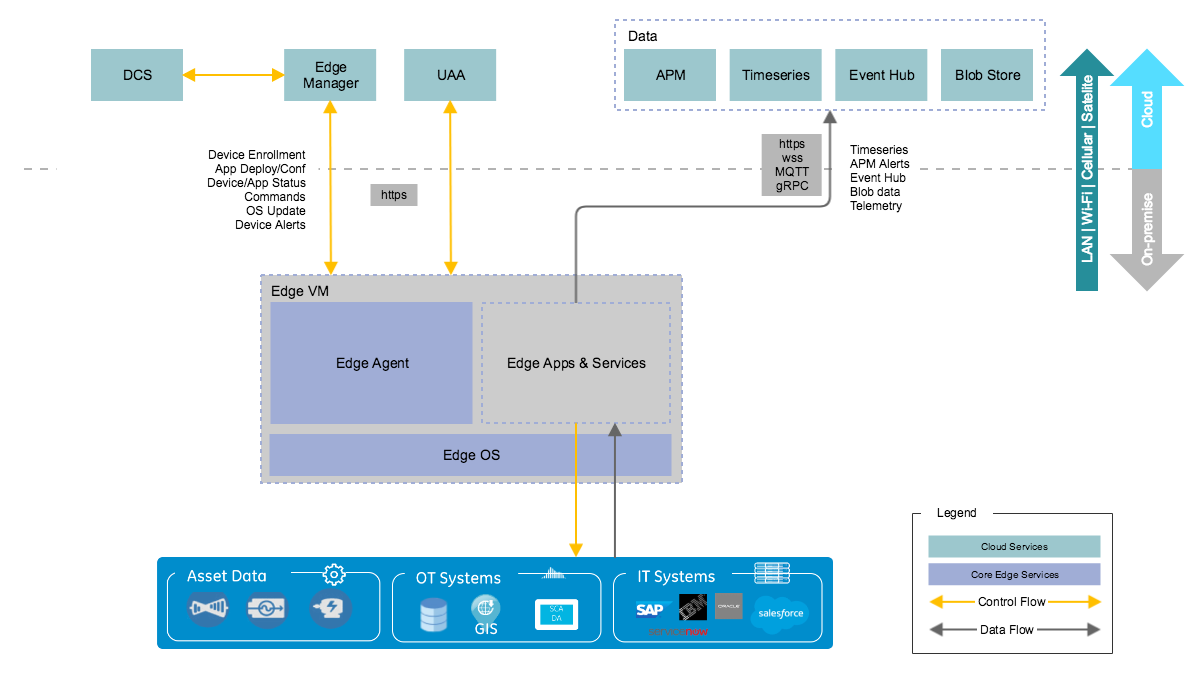Edge Architecture Overview
Edge technology includes Edge OS - a secured Operating System; Edge Manager - a cloud application to remotely manage fleets of edge devices; and Cloud Connectivity Services - a set of optional services to securely connect Edge devices to Digital-hosted Cloud Applications and Services.

Together with edge devices, edge applications, services and connectivity, they enable compute capabilities closer to machines, particularly to add operational value by executing workloads near the machines that generate the data.
By enabling data processing, storage, and analytics closer to machines, Edge technology creates a tight union between machines, control systems, and modern applications while easily and securely connecting edge devices to Edge services.
Edge Technology Benefits for Industrial Operations
- Rapid deployment: Turn industrial machines into smart, connected machines.
- Better, faster asset insights: Ability to use machine data faster and more efficiently, enabling quick decisions about performance, availability, and production optimization.
- Reliability and manageability: Enables IT teams to track, manage, and communicate with all edge devices and connected assets anytime, anywhere.
Edge 2.0 Key Capabilities
- Connect:
- Bi-directionally connect industrial assets over OPC-UA, Modbus, or MQTT to read and write data control tags.
- Process:
- Run C, C++, Python, Node.js, or Java applications and analytics on the edge device in a docker-based edge execution environment.
- Transmit:
- Securely transfer data to Digital-hosted Cloud Applications and Services.
- Store and forward data during intermittent cloud connectivity.
- Manage:
- Authenticate edge devices using Predix cloud identity and certificate-based device enrollment.
- Enable centralized device and application lifecycle management of edge device fleet using Edge Manager.
- Extensibility:
- Extend Edge 2.0 functionality through custom commands, custom software packages, and additional protocol adapters as multi-container Docker applications.
Edge 2.0 simplifies and accelerates the development and deployment of edge applications by providing a hardened, stable, and extensible platform.
- DCS: Device Certificate Service.
- Edge Manager: Predix fleet management.
- UAA: User Account and Authorization is a multi-tenant identity management server. Its primary role is to issue tokens for client applications when they interact with the cloud services.
- Edge VM: In the GA release, the Edge OS is deployed as a Virtual Machine.
- Edge OS: Provides a secure base to run applications and common services to manage containers, applications, and the operating system.
- Edge Agent: Manages connectivity to Edge Manager.
- Container Support: Container support to allow independent applications to co-exist. (May not be available in lower capability devices.)
- Cloud Data Services: Cloud processing of the telemetry data sent from the edge devices. Examples of cloud data services are APM, Time Series, and Event Hub.